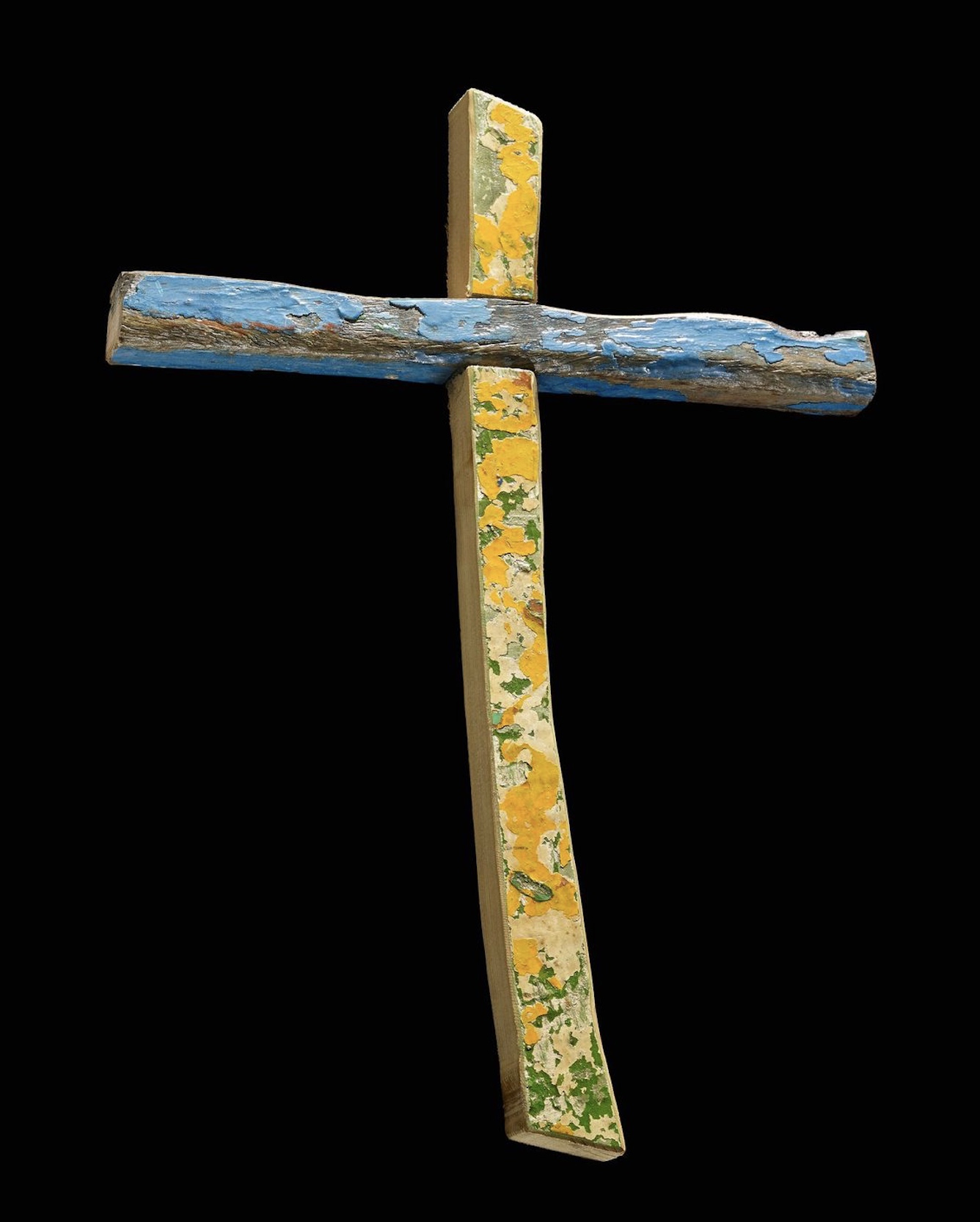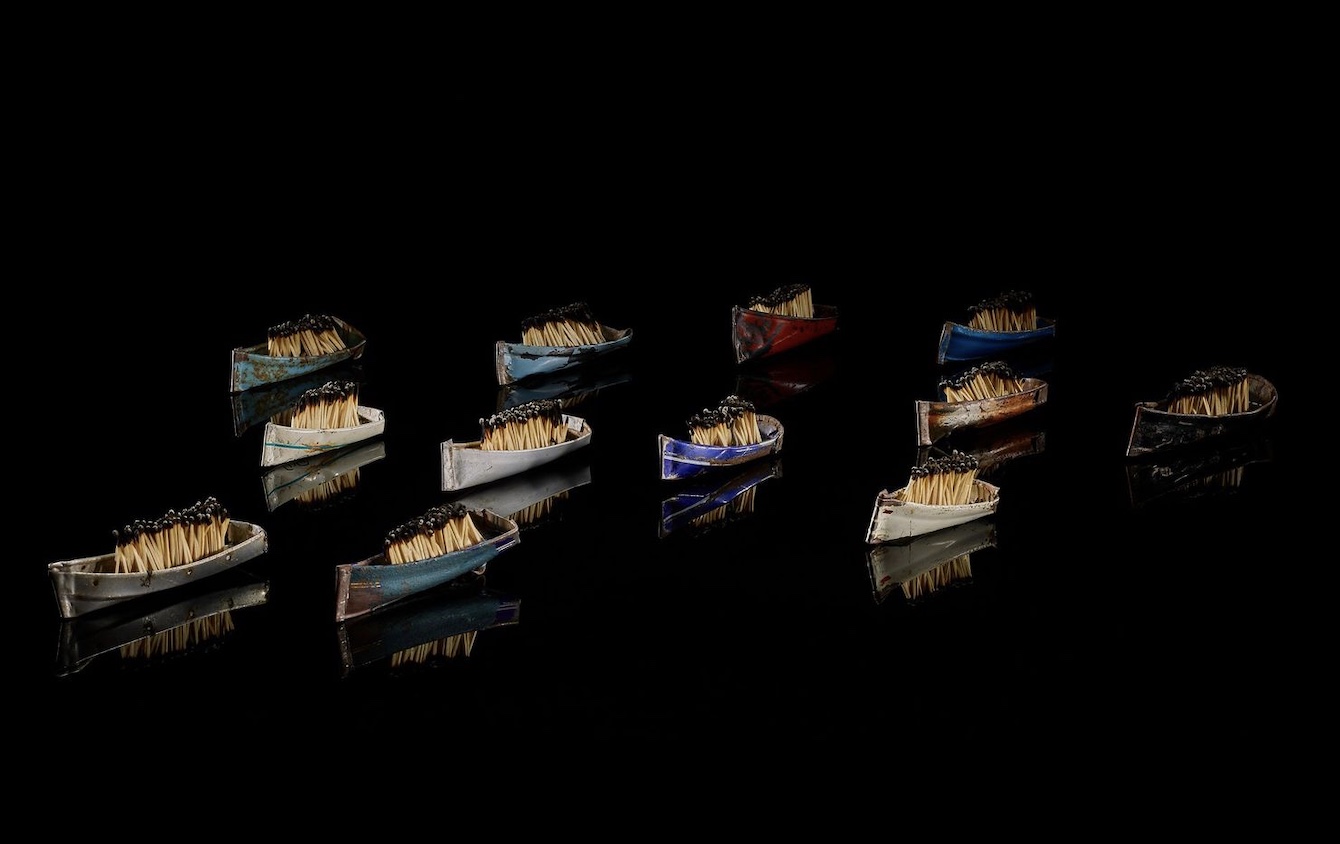Lampedusa Cross – Rochester Cathedral
28th September 2022
Kindness, community and the indifference faced by many refugees.
Made from the remnants of a boat carrying refugees wrecked near the Italian island of Lampedusa, the British Museum’s Lampedusa Cross can now be seen in Rochester Cathedral on its nationwide tour to raise awareness of the migrant crisis.
Rochester Cathedral to display Lampedusa Cross as part of its first UK tour
The cross is made from the remnants of the boat that saw 311 lives lost when it was wrecked near Lampedusa, off the coast of Tunisia in 2013. The overcrowded boat was carrying 466 migrants from Somalia and Eritrea.
Moved by the plight of survivors whom he met in his church, the island’s carpenter, Francesco Tuccio, made an individual cross for each person as a mark of the 155 survivors’ salvation from the sea, and their hope for the future.
He also made larger crosses that he gifted as a plea for discussion about community and responsibility – it is in this context that the British Museum acquired this cross in 2015, simply made from two pieces of brightly painted wood fitted together.
The cross carries poignant messages about kindness, community and the indifference faced by many refugees.

Alongside the cross will be a display of twelve tiny boats from Syrian-born Issam Kourbajʼs series Dark Water, Burning World, to raise awareness of the ongoing plight of Syrian people.
The tiny sculptural boats are made from repurposed bicycle mudguards tightly packed with burnt matches to represent the fragile vessels used by refugees to make their perilous voyages across the Mediterranean.

Inspired by Syrian antiquities depicting sea vessels that date from the 5th century BC, the boats convey the fear and exhaustion of the crossing, and the trepidatious uncertainty of survival. Using cheap and discarded materials that might otherwise go to waste, Kourbaj represents the need for refugees to use what they can following separation from their homeland, while urging the global community to find value in everything and everyone, no matter how humble their origins.
The Rev’d Canon Dr Gordon Giles, Canon Chancellor at Rochester Cathedral said:
“We are honoured and humbled to be hosting this exhibition, which not only brings some powerful and unique objects into our ancient and sacred space, but gives us the opportunity to raise awareness of and show solidarity with all those who have endured the trauma and tragedy of dislocation and displacement.
“While unique and beautiful, the Lampedusa Cross is a universal object representing millions of people worldwide and throughout history, a poignant reminder of whose plight is timely and necessary. The symbol of the Cross carries us through time and space, the past and future intersected by suffering and sacrifice, which cry out for compassion, comprehension and action.
During the period of the exhibition we shall also be marking Black History Month, which also has some focus on the widespread travelling and trafficking of those who flee persecution or seek a more just, safer life.
We invite visitors to see the Lampedusa Cross and model boats and be inspired to reflect, act and pray for all in peril on the seas.”
The Lampedusa disaster was one of the first examples of the European migrant crisis. It led to operation Mare Nostrum – our sea – in 2013 which saw the Italian navy rescue 150,000 people from the straits of Sicily.
There was no official maritime response in 2013 and the islanders of Lampedusa did not wait for official authority or funding to rescue those in peril on the sea. They shared resources to rescue, feed, clothe, comfort survivors and bury those washed up on the shore.
Their kindness altered their formally idyllic life and challenged them with difficult and unwelcome changes.
The tour will touch on the ethical and practical challenges presented by mass movements of people, and how Europe has recently responded to refugees and migrants.
The Spotlight Loan is part of the British Museum’s National Programmes, bringing objects from the Museum to audiences around the UK for free.
British Museum curator Jill Cook said:
“The Lampedusa Cross reminds us of all the histories that are lost and of the thousands of people who are not otherwise remembered. The wood with its paint blistered by the sun and smelling of salt, sea, and suffering embodies a crisis of our times, as well as hope. The cross invites discussion of the varied reactions to one of the great tragedies of our time. It is an artefact shaped by tragedy that symbolizes those who have nothing and desperately seek to share in a better future. As such, it is touchingly complemented by Issam Koubraj’s little boats.”
Artist Issam Kourbaj says,
“Lead was the first material I experimented with when making my boats. I used it for its density, as a response to the many tragedies of sinking boats in the Mediterranean, but also the ancient miniature model ship carrying three goddesses that inspired this piece was made from lead too.
Soon after I was drawn to bicycle mudguards, which are designed to protect from the mud, yet sadly many Syrians and many others were not guarded by the flimsy boats, lead-like, that they were so desperate to take to escape the destruction.
Spent matches speak about the people of the boats, with burnt parts to reflect the trauma that those women, children and men carry with them, while water-like resin holds these burnt matches together, just as we all bond, hold and support each other in desperate times.”
Crossings: community and refuge will be on display at Rochester Cathedral from the 22 September until 27 November 2022.
Supported by the Dorset Foundation in memory of Harry M Weinrebe.